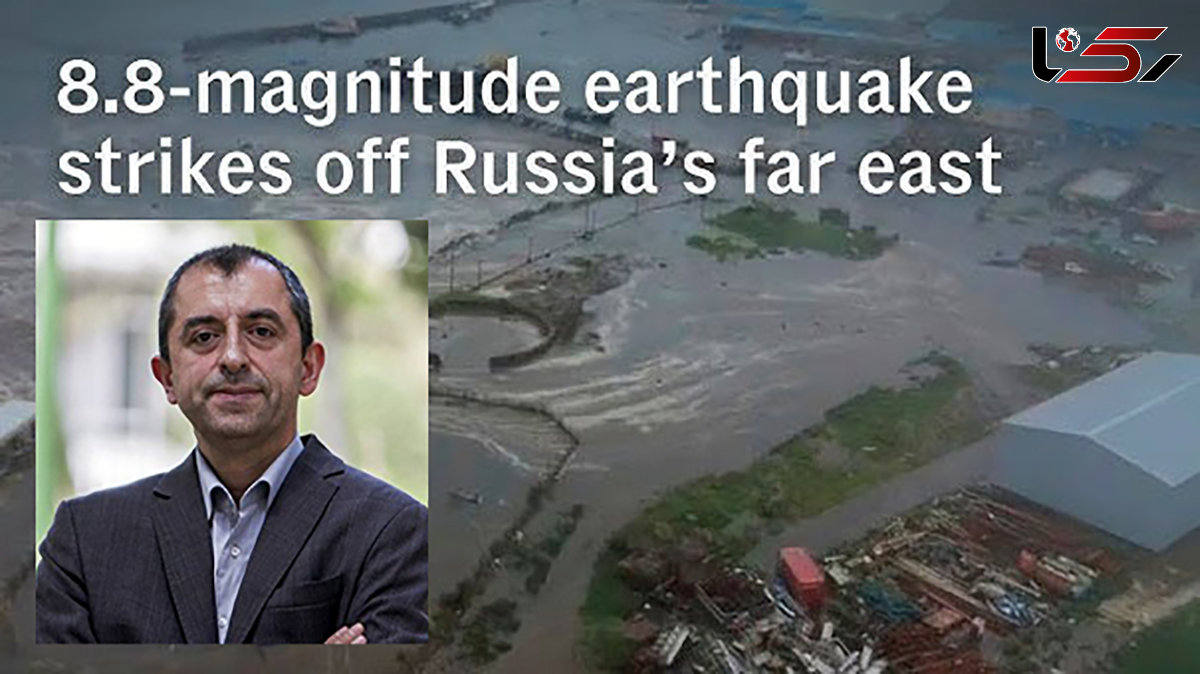Dr. Mehdi Zare stated in an interview with Rokna.
8.8-Magnitude Earthquake Strikes Kamchatka / Geology Professor Comments on Its Impact on Iran's Fault Lines and Seismic Activity
A devastating 8.8-magnitude earthquake shattered the seismic silence of eastern Russia in the early hours of July 30, 2025, triggering tsunami alerts across the coastal regions of Japan, Hawaii, Alaska, and Taiwan. While the event occurred far from Iran and, according to reports, had no direct impact on the country’s internal fault lines, the seismic awakening within the “Ring of Fire” once again highlights the profound vulnerabilities in Iran’s seismic monitoring, preparedness, and structural resilience systems. Dr. Mehdi Zare, full professor of geology, offered his expert insights on the matter.

Social Desk – Rokna: A powerful 8.8-magnitude earthquake struck parts of Russia on Wednesday. The undersea quake occurred in the Pacific Ocean at 11:24 AM local time (Far East Russia) on July 30, 2025, corresponding to 23:24:50 UTC on July 29, with a moment magnitude of 8.8. The epicenter was located in the Pacific coastal region of the Kamchatka Peninsula, approximately 136 kilometers southeast of Petropavlovsk-Kamchatsky, at a depth of 21 kilometers.
Following the earthquake, both Japan and the United States issued tsunami warnings.
Professor Mehdi Zare, a full professor of geology, shared the following insight with Rokna in the wake of this major seismic event:
"This massive earthquake occurred in a previously aseismic gap between the rupture zones of the 1923 Kamchatka earthquake and the 1952 Severo-Kurilsk earthquake. Ten days prior, a foreshock with a magnitude of 7.4 had occurred on July 20, approximately 60 kilometers southwest of the July 30 event. Additionally, another earthquake with a magnitude of 7.0 occurred on July 21.
The July 30 earthquake resulted from shallow-depth reverse faulting along the subduction zone boundary. The estimated rupture area extended approximately 390 kilometers by 140 kilometers, and the rupture duration exceeded three minutes—more than 180 seconds.
This earthquake struck within the Kuril-Kamchatka subduction zone, part of the northwestern segment of the Pacific Ring of Fire, where the Pacific Plate is actively subducting beneath the North American Plate along the eastern coastlines of the Kuril Islands and the Kamchatka Peninsula. This active subduction has been ongoing since approximately 100 million years ago, during the Cretaceous period, with a current convergence rate estimated between 76 and 90 millimeters per year.
The 1952 earthquake, which also had a magnitude of 8.8, occurred about 45 kilometers southeast of the July 30, 2025 epicenter and triggered a massive and destructive tsunami along the Kamchatka coast.
Following the recent quake, the Japan Meteorological Agency issued tsunami warnings for coastal regions stretching from Hokkaido to Wakayama in Honshu. Evacuation advisories were issued for 900,000 residents across 133 cities. It was announced that tsunami waves up to 3 meters high were expected to reach the coast.
Tsunami warnings were also issued for parts of Alaska, Hawaii, and British Columbia, Canada (for waves potentially reaching heights of 30 centimeters). The entire U.S. West Coast, including parts of Alaska's Aleutian Islands, was placed under tsunami advisory, and a full evacuation order was issued for the entire state of Hawaii.
In Japan, runways at Sendai Airport in the Tohoku region were closed. Workers at the Fukushima Daiichi nuclear power plant—damaged in the 2011 earthquake and tsunami—were ordered to evacuate. The scheduled release of treated radioactive water from the facility into the Pacific Ocean was also halted. Japan's Ministry of Defense deployed aerial units to gather information from the Pacific coast.
In China, the Ministry of Natural Resources issued a Yellow Warning—the second-lowest level in its four-tier tsunami warning system—which also covers Taiwan. Taiwan’s Central Weather Administration issued a "tsunami alert," stating that waves up to one meter high could strike the island’s southeastern and southwestern coasts.
Since this earthquake occurred approximately 8,400 kilometers away from Chabahar, it has no impact on the fault lines or seismic activity in Iran.
Send Comments